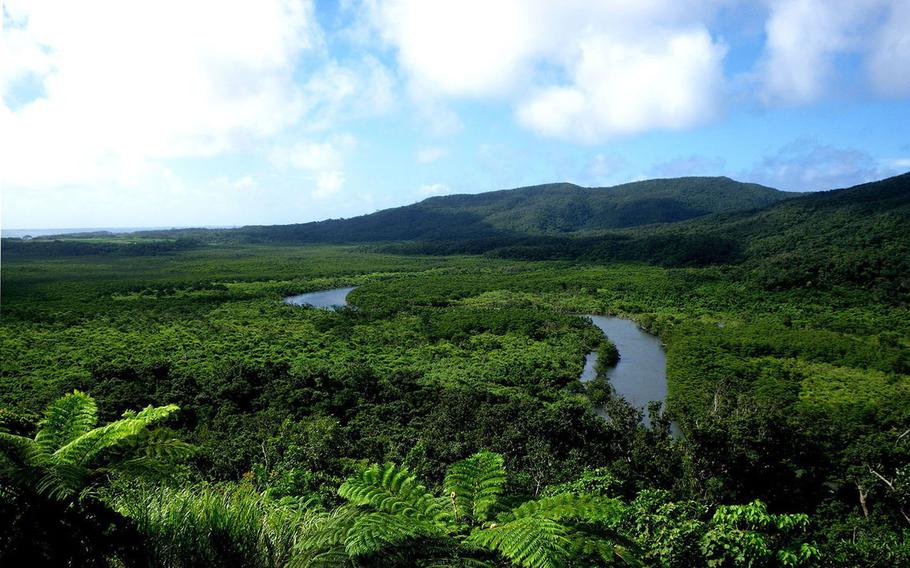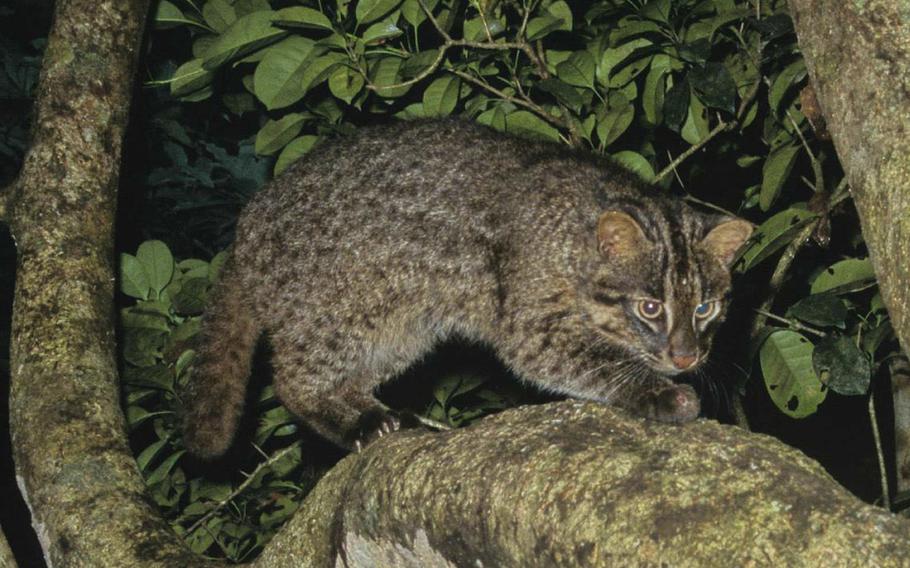Asia-Pacific
Japanese prefecture sets tourism limits to spare exceptional island ecology
Stars and Stripes March 30, 2023

Iriomote Island in Okinawa prefecture, Japan, is renowned for its untouched forest, stunning vistas and unique species. (Japan Ministry of the Environmen)
CAMP FOSTER, Okinawa – Okinawa prefecture is expecting tourists and businesses to cooperate with limits on visitation to one of Japan’s most popular destinations, the so-called “Galapagos of the East.”
Iriomote Island, an important ecological site in the Nansei chain, is suffering from its popularity, according to an announcement Tuesday by the prefectural Department of Environmental Affairs.
“The purpose of this plan is to minimize the effects caused by the tourists on nature and the local community,” the announcement states. “One of the effects on the local community was water supply problems.”

Only 100 of the wild Iriomote cat are believed to exist on the remote Iriomote Island, Okinawa, Japan. (Japan Ministry of the Environmen)
Starting Saturday, the prefecture will impose a cap of 1,200 tourists per day – or 330,000 annually - at the remote island, the prefecture’s second largest landmass after the main island, Okinawa, according to the statement on the department’s website.
The department is promoting sustainable tourism in the southern island chain that stretches from Kyushu, the southernmost of Japan’s four main islands, to within 70 miles of Taiwan.
The guidelines are not compulsory, but people are expected to follow them, a Taketomi town spokesman told Stars and Stripes by phone Thursday. Taketomi has administrative control over the island. Some government officials in Japan speak to the media on condition of anonymity.
The number of sites on the island open to guided tours and daily visitation will also be limited, according to the announcement.
Iriomote, a World Heritage site 120 miles east of Taiwan, is renowned for its untouched forest, stunning vistas and unique species. It hosted 290,000 visitors in 2019, the website said.
The island is approximately 10 miles west of Ishigaki Island, in the heart of the Nansei chain, and is home to approximately 2,400 residents. Beaches of warm, silky sand; submerged mangrove forests; and jungle cascades create an alluring wilderness just a 50-minute flight from Naha, Okinawa.
Much of the 115-square-mile island is a national park that is home to a critically endangered wild cat called the Iriomote yamaneko, of which only about 100 are known to exist.
Plans to promote sustainable tourism on the island trace began in January 2020 after a series of tourism-related incidents, from water shortages and traffic accidents involving wildlife to habitat destruction, according to the department website. The decision this week invoked Japan’s Ecotourism Promotion Act.
Under the new guidelines, only 20 sites on the island will be accessible to tourists, according to the department. Only 200 people per day may visit the Hinai River, 100 the Sangara River, 30 at Mount Komi and Mount Tedou and 50 at the head of the Urauchi River.
Prefectural officials used a local ordinance to set policy on local guides, which are now required to access sites on the island, the announcement states. The number of visitors per guided tour is also restricted.
The plan brings policy in line with United Nations requirements for World Heritage sites, a designation the island received in July 2021, according to the announcement.
Iriomote tourism peaked in 2007 when 406,000 people visited the island, according to the department. Over the past decade, an average of 330,000 people have visited annually.